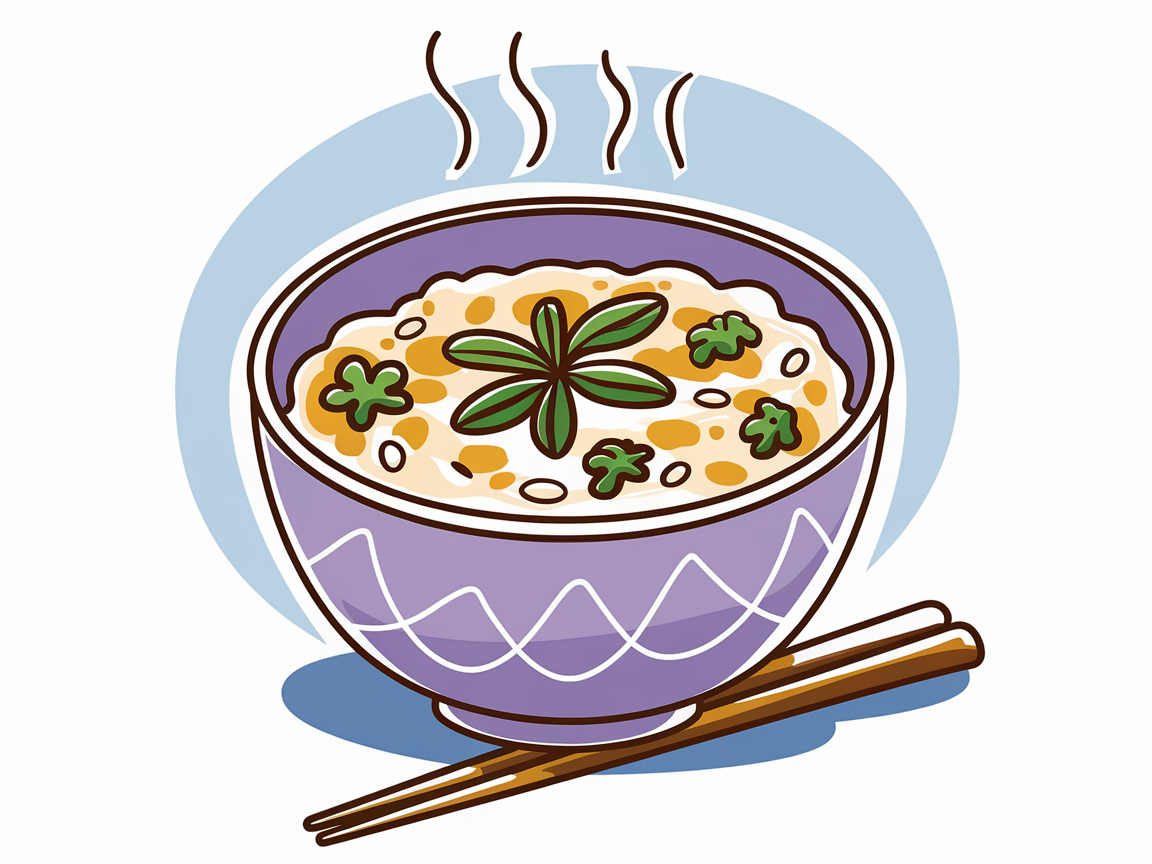
「七草がゆ」を英語で言うと?~七草粥の英語表現~
「seven herb rice porridge」という英語表現がある。直訳すると「七つのハーブのライスポリッジ」となるが、日本の伝統的な七草がゆを指す言葉として定着している▼日本では1月7日の朝に七草がゆを食べる習慣があるが、地域によっては小正月の1月15日や月遅れの2月7日に食べるところもある▼英語圏では一般的にporridgeといえば、オートミールに牛乳を加えて作る温かい朝食を指す。そのため、お米で作る日本のお粥は特に「rice porridge」と表現する必要がある▼七草の英名も興味深い。セリは「water dropwort」、ナズナは「shepherd’s purse」、ゴギョウは「cudweed」、ハコベラは「chickweed」、ホトケノザは「henbit」、スズナは「turnip」、そしてスズシロは「daikon radish」と呼ばれる▼この風習は中国から伝わり、江戸時代に日本で広く定着したとされる。お正月のごちそうで疲れた胃腸を休める意味合いがあり、同時に一年の無病息災を願う行事として親しまれてきた▼七草には一つ一つに意味が込められている。例えば、セリには「競り勝つ」、ナズナには「なでて汚れを払う」という願いが込められている▼現代では、スーパーマーケットで七草セットを購入できるようになり、フリーズドライ製品やお茶漬けのふりかけとしても販売されている。伝統的な食文化が、時代とともに形を変えながら受け継がれている様子は、まさに「as right as rain(完璧な状態)」というイディオムで表現できるかもしれない。

【英語訳】How to Say “Nanakusa-gayu” in English: Expressions for the Seven Herb Rice Porridge
“Seven herb rice porridge” has become the established English term for Japan’s traditional nanakusa-gayu. While Japanese people traditionally eat this porridge on the morning of January 7th, some regions observe this custom on January 15th (small New Year) or February 7th.
In English-speaking countries, “porridge” typically refers to a warm breakfast made with oatmeal and milk. Therefore, Japanese rice-based porridge needs to be specifically referred to as “rice porridge.”
The seven herbs have interesting English names:
Seri: water dropwort
Nazuna: shepherd’s purse
Gogyo: cudweed
Hakobera: chickweed
Hotokenoza: henbit
Suzuna: turnip
Suzushiro: daikon radish
This custom, which originated in China and became widespread in Japan during the Edo period, serves two purposes: to give rest to stomachs that have been indulging in New Year’s feasts, and to pray for good health throughout the year.
Each herb carries symbolic meaning. For example, seri suggests “to excel” (seri-agaru), while nazuna implies “to brush away impurities.”
In modern times, seven-herb sets are available in supermarkets, and the dish has evolved into convenient forms like freeze-dried products and rice seasoning. This adaptation of traditional food culture to modern times might be described as being “as right as rain,” showing how customs can maintain their essence while changing with the times.







